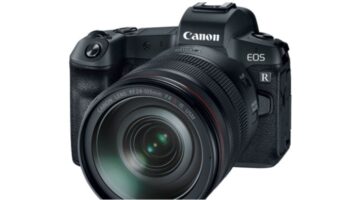
Design
So let’s start with the thing most people are going to notice about the EOS R when they pick it up – Build and Design. It has a very light and compact form factor, smaller than the 5D range of DSLR cameras. The physical dimensions of the camera feel a little bit small from my big hands, but thanks to the large grip, it feels like you’re never going to drop the camera, even in slippery and wet conditions. The new RF mount is wide and the distance between the mount and the image sensor is just 20mm. This gives Canon to build better lenses that let in over 100% more light compared to Canon mount body. Unlike some other mirrorless cameras, removing the lens didn’t expose the sensor.
The EOS R launched with four RF lenses, but that doesn’t mean you’re stuck with just those lens. You can attach Canon EF full-frame or APS-C EF-S lenses on the EOS with three new adapters with no loss in quality.
Performance
The Canon EOS R has a 30-megapixel full-frame sensor with 5655 focus points covering 88% of the frame horizontally and 100% of the frame vertically. This means while you have good control over your AF area placement, adjusting it is a very slow controlling with keys. But we’re very much impressed with the autofocus, thanks to the Dual Pixel technology. The main benefit of Dual Pixel CMOS AF is that it quickly speeds up focus when the camera is being operated in live-view mode. Canon EOS R supports 4K video recording. But, the 4K video is crushed by a 1.8x crop factor which means it can’t take the full advantage of the full frame sensor. On top of that, it lacks in-body stabilization, putting it at a disadvantage to rival models from Nikon and Sony. Being a mirrorless camera means the EOS R is all digital, so there is no optical finder. Instead, it has a built-in electronic viewfinder offering a high-resolution view with no lag issues. The display can flip to the front, making it ideal for selfie lovers or for vlogging. The Canon EOS R uses a custom LP-E6N rechargeable lithium-ion battery for power, and ships with a dedicated battery charger. It also has a USB-C port and can charge the battery over it. It doesn’t work with all chargers, Canon recommended to use its own original charger.
Specs
- 30.3 Megapixel full-frame CMOS sensor.
- Dual Pixel CMOS AF with 5,655 manually selectable AF points.
- DIGIC 8 image processor.
- Built-in EVF with 3.69 million dots.
- Vari-Angle Touchscreen LCD and dot-matrix LCD panel.
- Single memory card slot that supports UHS-II media.

